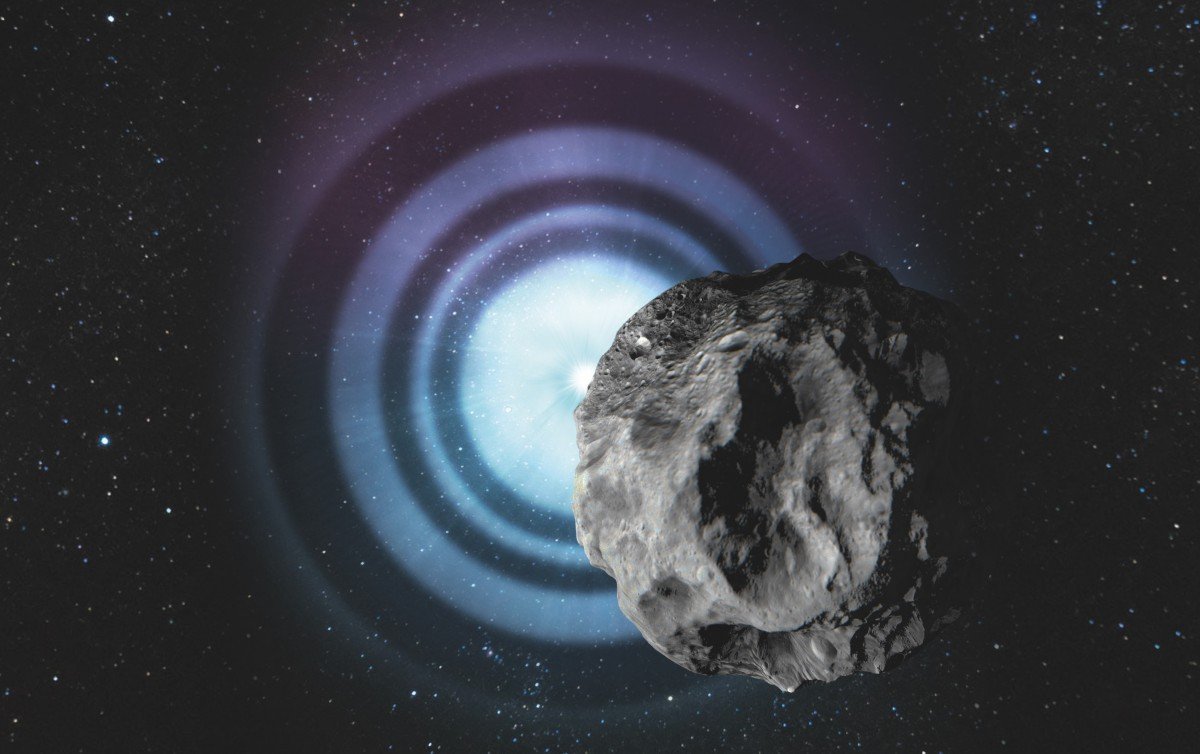
Hardly any star in the night sky is close enough to Earth for scientists to find out directly how big it is. For most of them, the distance is too great even for the best telescopes to perceive them well enough. Therefore, researchers use an optical phenomenon called diffraction to calculate the diameter of a star. This effect can be observed, for example, when an asteroid from our solar system randomly passes in front of a distant star.
An international research team led by Tarek Hassan of the German electron synchrotron (DESY) and Michael Daniel of the Smithsonian Astrophysical Observatory (SAO) have now succeeded in determining the diameters of distant stars, with the help of the special properties of gamma-ray telescopes. Using measurements with the “Very Energetic Radiation Imaging System” (VERITAS), they were able to calculate the size of stars hundreds and thousands of light years away.
“The extremely weak shadows of asteroids are dragging over us every day”, explains Tarek Hassan. “However, the edge of the shadow is not sharp. Instead, the central shadow is surrounded by light patterns reminding of small water waves.” In physics, this phenomenon is called a diffraction pattern and can be created in any school laboratory with the help of a laser directed at a sharp edge.

Conclusions on the Expansion of the Light Source
The shape of this pattern allows conclusions to be drawn about the expansion of the light source. While the diffraction pattern can be read quite easily in a school laboratory, measuring a star with an asteroid is much more difficult. “The star occultations by asteroids are very difficult to predict”, says Michael Daniel. “And the diffraction pattern can only be explored by taking quick snapshots while the shadow travels over the telescope.”
In this way, astronomers have already succeeded in measuring stars that were temporarily covered by the moon. Apparently, this works up to an angular diameter of one thousandth of an arc second. Figuratively speaking, this would equate to the size of a two-cent coin appearing on the Paris Eiffel Tower, while looking at the scene from New York. However, since only a few stars in our sky are so large, the team used Cherenkov telescopes to determine even smaller angular diameters.
According to astronomers, these telescopes are specially designed to “capture the extremely short and faint bluish glow that is produced when a high-energy particle or gamma quantum from space hits the Earth’s atmosphere”. Using the VERITAS Cherenkov telescopes at the Fred Lawrence Whipple Observatory in Arizona, the scientists were able to capture the diffraction pattern of the star TYC 5517-227-1 when it was temporarily covered by the 60-kilometer large asteroid Imprinetta on 22 February 2018.
The telescopes were able to take 300 images per second, from which the researchers were then able to very accurately reconstruct the brightness profile of the diffraction pattern. Taking into account the distance of 2674 light years, they came to a diameter of the star, that is eleven times larger than that of our Sun, and were able to classify it as a red giant.

A New Method to Determine the Diameter of Stars
Three months later, the astronomers were able to study another star, TYC 278-748-1, which was covered by the 88-kilometer asteroid Penelope on May 22, 2018. The evaluation revealed an angular diameter of 0.094 thousandths of an arc second, which corresponds to 2.17 times the diameter of the Sun, at a distance of 700 light years.
“This is the smallest angular diameter of a star that has ever been measured”, Daniel emphasizes. “The observation of star occultations by asteroids with Cherenkov telescopes provides a resolution ten times better than the standard method for star occultations by the moon. And it is at least twice as sharp as interferometric size measurements.” According to the researchers, the measurement inaccuracy of the new method is currently around ten percent. “We expect that this can be significantly improved by an optimized setup, for example by limiting the observed wavelengths to a certain range”, says Daniel. Since different wavelengths would be diffracted differently, the measured diffraction pattern would be blurred if a too wide wavelength range were recorded.
“Our pilot study establishes a new method for determining the diameter of stars”, summarizes Hassan. According to the researchers, using suitable telescopes it should be possible to observe more than one asteroid star occultation per week. “Since a star appears smaller the further away it is, improving the angular resolution also means extending the range of such observations”, explains the DESY researcher. “We estimate that with our method it is possible to analyze stars at ten times the distance than with the lunar occultation method”. The technology could thus provide enough data to study a larger number of stars in so-called population studies.
The work of the astronomers was published in the journal “Nature Astronomy”.
Also interesting:
Einstein was Right After All: First Picture of a Black Hole
The Milky Way Weighs 3 000 000 000 000 000 000 000 000 000 000 000 000 000 TONS
ESO’s VLT Shows Bubbles of Brand New Stars
Hubble Discover the Brightest Quasar in the Early Universe
Hubble Find More Evidence for Moon Outside our Solar System

